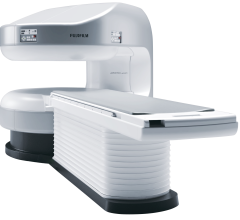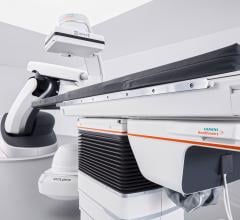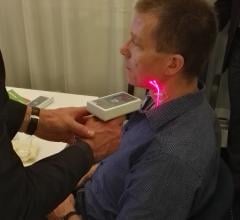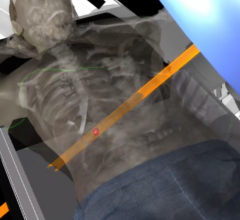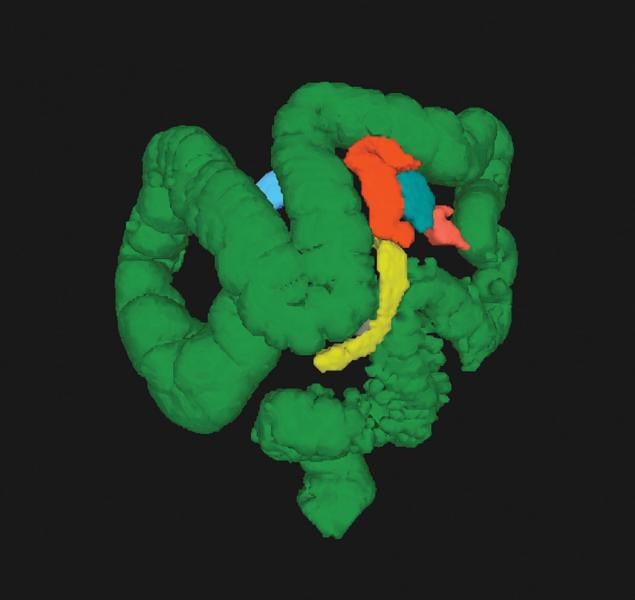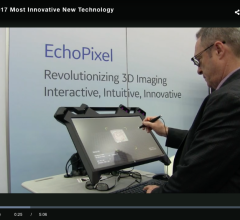A new Harvey L. Neiman Health Policy Institute study shows that a claims-based system used to subspecialty classify academic radiologists accurately identifies self-designated subspecialties for the approximately half of included private practice radiologists who have a subspecialized practice. The study is published online in the Journal of the American College of Radiology (JACR).
July 6, 2017 — Radiologists can improve their consistency of interpreting and reporting computed tomography (CT) and ...
Eliot Siegel, M.D., associate vice chair of diagnostic radiology and nuclear medicine, vice chair of information systems ...
Fujifilm’s APERTO Lucent is a 0.4T mid-field, open MRI system addressing today’s capability and image quality needs ...
Varian Medical Systems has received U.S. Food and Drug Administration (FDA) 510(k) clearance for the Halcyon system, its new device for cancer treatment. Halcyon simplifies and enhances virtually every aspect of image-guided volumetric intensity modulated radiotherapy (IMRT), according to the company.
July 5, 2017 — Michigan Medicine recently became the first healthcare institution in the United States to install the ...

SPONSORED CONTENT — Fujifilm’s latest CT technology brings exceptional image quality to a compact and user- and patient ...
In this video, NTT DATA Services describes enterprise imaging as the secure capture, retention, management, access and ...
SPONSORED CONTENT — Fujifilm’s latest CT technology brings exceptional image quality to a compact and user- and patient ...
The American Society of Neuroradiology (ASNR) recently announced the creation of the Anne G. Osborn ASNR International Outreach Professor Program, with the goal of creating enduring and sustainable support to bring high-quality neuroradiology education to developing areas of the world.
With worldwide cardiovascular deaths at an all-time high, European scientists have developed a new handheld scanner that can read the heart's vital signs like a supermarket barcode reader can scan items at the checkout. This would allow a general practitioner (GP) to diagnose even preclinical patients for the early onset of a disease.
A new study from Roswell Park Cancer Institute reporting the findings of the first clinical trial to evaluate the immune effects of high-dose radiation therapy followed by surgery in patients with advanced kidney cancer may also set the stage for combination treatments with immunotherapy. The research, published in Clinical Cancer Research, a journal of the American Association for Cancer Research (AACR), shows that nephrectomy can be effectively paired with stereotactic body radiation therapy (SBRT), and also provides strong evidence that immunotherapy may be an effective third element to incorporate into this combination therapy strategy.
SPONSORED CONTENT — EnsightTM 2.0 is the newest version of Enlitic’s data standardization software framework. Ensight is ...
I miss carbon paper. I get that it was messy. The imprint of characters was incomplete, no matter how hard I struck the keys. But its presence between two sheets of paper — original and carbon copy — was ... comforting. Physically putting it there and scrolling the carbon sandwich into place would get me something.
Two decades of research on the masking risk of dense breast tissue by mammography screening is indisputable. As the density of the breast increases, the reliability of a mammogram to see, and in turn, detect breast cancer decreases. Additionally, since 1976, researchers have concluded that having dense breast tissue is also an independent risk factor for breast cancer. Unlike the masking risk, the extent of the causal risk of dense breast tissue has been fiercely debated in the literature and by healthcare professionals from having a slight, to moderate, to strong risk of developing breast cancer. Several studies conclude that having dense breast tissue is a larger risk than having a family history of the disease. According to the American Cancer Society, heterogeneously or extremely dense breast tissue (greater than 50 percent dense) confers a 2.1 to 4 times greater risk of breast cancer as compared to women with less dense breasts, similar to having one first-degree relative with breast cancer.
The radiology market is extremely fragmented, with more than 3,000 radiology practices in the United States1 and the average size being 10 radiologists per group.2 The biggest challenge many groups face is how to continue growing their practice volume in an increasingly complex and competitive healthcare environment. In addition, radiology groups continue to face key issues, including uncertainty about existing healthcare policy, reimbursement changes, healthcare reform and the complexity of standardized data reporting.
Did you know that approximately one-third of all the data in world is created by the healthcare industry and that ...
Hollywood has shone its lights on potential dystopian futures and the threats of cruel, calculating computers for decades. But look beyond the Arnold Schwarzenegger-type cinematic portrayals of cybernetic antagonists, and there might be a future for the United Kingdom’s National Health Service (NHS) where teaching machines new tricks with data could result in huge benefits for transforming diagnostic capacity and the very nature of how our professionals identify serious illnesses.
James Whitfill, M.D., chief medical officer, Innovation Care Partners, and Christopher Roth, M.D., director of imaging ...
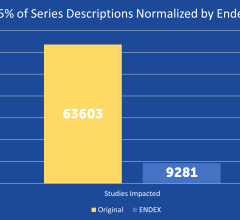
SPONSORED CONTENT — EnsightTM 2.0 is the newest version of Enlitic’s data standardization software framework. Ensight is ...
Computed tomography colonography (CTC), also known as virtual colonoscopy, offers a noninvasive alternative to traditional (optical) colonoscopy for detection of precancerous polyps. The technology has been around for over 20 years, and numerous studies have shown it to be effective for diagnosis and screening. Questions about its utility as a screening tool persist, however, as the Centers for Medicare and Medicaid Services (CMS) reiterated in December that it will not reimburse providers for CTC in that role. The radiology community is working to change that by finding ways to improve the procedure and educating patients and providers.
One of the more significant advancements for interventional X-ray (IXR) in the past few years has been an increased focus on core and supporting technologies to provide high-quality, high-resolution images without a corresponding increase in radiation dose.
Recently, the oncology department needed to update its radiation therapy treatment planning system. The department carried out an extensive assessment of possible systems before selecting RayStation, and key requirements included fast calculation speed, support for multimodality imaging and adaptive planning capabilities. The RayStation configuration comprises 10 planning and 10 contouring workstations and licenses for 3DCRT, IMRT and VMAT planning, multi-criteria optimization (MCO), deformable image registration, dose tracking and adaptive replanning.
Image-guided radiation therapy offers great potential to improve the efficiency of treating cancer patients by more accurately tracking tumor response so that treatment can be adjusted accordingly. While there are numerous imaging modalities available, only some have proven effective for the purpose of guiding radiation therapy. In particular, magnetic resonance imaging (MRI) is generating great interest as an option that could provide real-time visualization for truly adaptive radiation therapy.
While radiation oncologists have a number of proven techniques at their disposal for treating patients, the reality is that no two patients are alike — perhaps even more so than in other medical specialties. As such, a great deal of planning is required to engineer an ideal, personalized treatment approach, especially as more advanced therapies continue to mature. In the last 12 months, several vendors have released updates to their treatment planning software (TPS) to help generate the most precise treatment plans possible while streamlining workflow. While many of these take the form of software to integrate with existing systems, a few dedicated radiotherapy imaging systems hit the market as well.
As technology moves forward, so does the evolution of consolidating multiple “ologies” into a system-neutral repository to create a comprehensive package for all imaging needs in radiology, cardiology and various other ologies as well. Imaging Technology News (ITN) and its sister publication Diagnostic and Interventional Cardiology (DAIC) often see the blending of the ologies at numerous trade shows throughout the year.

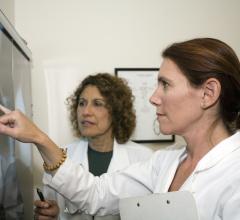
 July 06, 2017
July 06, 2017 


